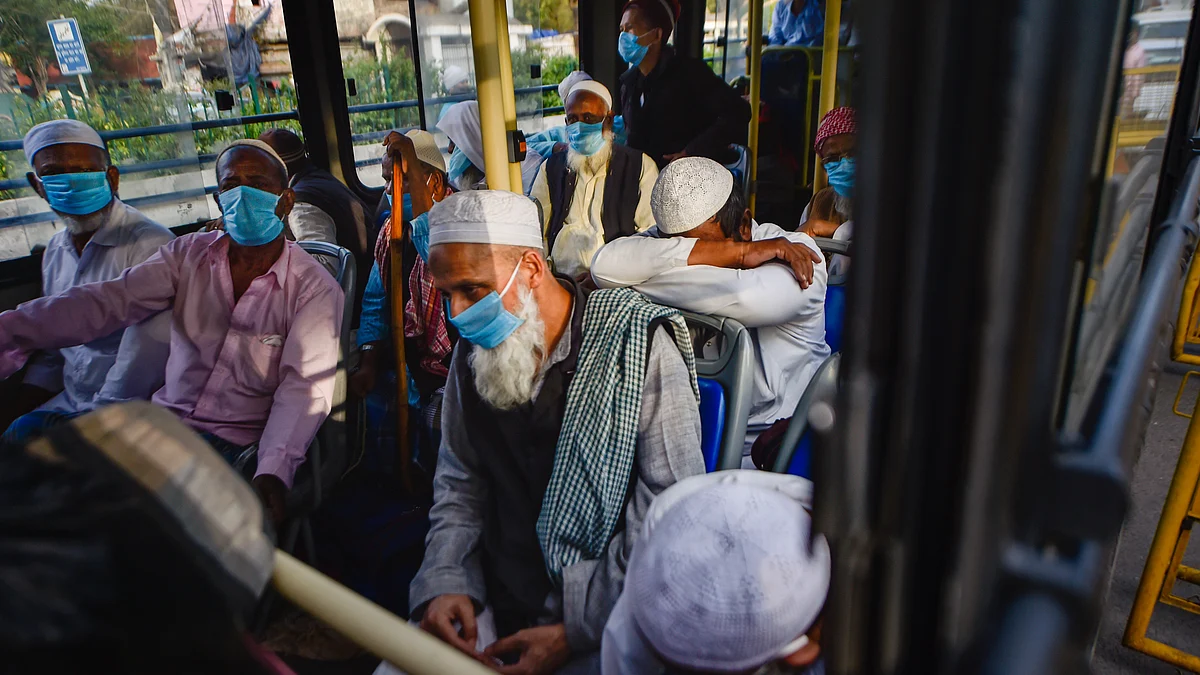Besides the death and suffering it has wrought, the coronavirus pandemic has sharply uncovered the fault lines in various societies. There are, of course, divides that come with any pandemic—the old and already ill, being more vulnerable than the young and healthy.
But it is also taking us back to a Darwinian age where the rich and powerful survive and the poor fall by the wayside.
In India, the thoughtless decision to impose a lockdown with a few hours notice, revealed the extent to which the economy runs on informal workers who have limited or no access to healthcare or the social safety net. About 90 per cent of India’s working people—some 400 million—are in the informal sector. These are the people who have been the hardest hit. We have already witnessed the scale of their distress as we saw hundreds of thousands of migrant workers trying desperately to get back home because they had neither food nor shelter nor health facilities guaranteed at their workplaces.
They are, in some ways, only the tip of the iceberg of rural distress that compels people to venture hundreds, if not thousands, of kilometres to do jobs at rates that the locals shun. In normal times, the migrants at least have an income to have their daily roti and dal, the ones they leave behind in villages sometimes do not even get this. As for healthcare, it’s virtually non-existent.
But India is not the only country whose weaknesses have been laid bare. The mighty United States of America, whose powerful armies ensure that no adversary can even approach CONUS (Continental United States), is being taken apart from within by a virus. But more than that is what the outbreak has done in bringing out the American giant’s feet of clay.
The most obvious ones visible are the extent of social and economic inequalities of society. In New York, the current epicentre of the virus, the highest concentration of cases has been in the neighbourhood of Queens, which has large immigrant populations with low average incomes. Blacks make 14 per cent of Michigan’s population, but account for 40 per cent of its dead from Covid-19.
The US economic system has already been ensuring that the rich had become exponentially richer, and the poor poorer. The country’s economy has grown 79 per cent since 1980, but where the income of the bottom half of the earners has grown just 20 per cent even as the top 0.01 per cent has seen a wealth increase of 420 per cent.
The New York Times has brought out in a stark series that by the time they reached 30, more than 90 per cent of the Americans born in 1940 were earning more than their parents. But among those born in 1980, only half were earning more than their parents by the age of 30. The Covid lockdown had to reckon with hundreds of thousands of Americans with no homes, or lower income families unable to connect to digital classrooms where lectures are supposed to be delivered. Nearly 30 million Americans had no health insurance and many of their companies were not required to provide them paid sick leave.
The pandemic is not responsible for this, but the deep fault lines in the political economy of the country has made it so much more difficult and painful for the average American in coping with it.
Now the huge economy has come to a grinding halt, with some 17 million people having been suddenly rendered unemployed, and more could join them in the coming months.
The skyrocketing unemployment rate — some 14.7 per cent right now, and the highest since 1940 — has led to long lines at emergency food banks across the US. This comes on top of some 37 million people who were already ‘food insecure’. The worry now is that the food banks, which run through donations that are declining, will run out of supplies.
For both India and the US, the pandemic brings heartbreaks. According to the UNDP, India made staggering progress between 2005-2015 by moving some 271 million out of poverty and halving the incidence of poverty, from 54.7 per cent to 27.5 per cent. Now many of them will find themselves sinking back into poverty again, with its accompanying deprivation.
In the US and India, governments have announced schemes to ameliorate the situation. Unfortunately, the bailout announced by our Finance Minister Nirmala Sitharaman is simply not enough to cope with the situation. As observers have pointed out, at Rs 1.7 lakh crore ($22 billion), it is just about 1 per cent of India’s GDP, in contrast to the US and Singapore, which are putting up 10 per cent. Further, it does not really address the tens of millions of workers in the unorganised sector or migrant labour. In the US, the measures do provide temporary relief, but they hardly address the structural issues which are making the task of coping difficult and will complicate economic recovery.
Whether it is the US or India, there is a larger message from the pandemic which hit us out of the blue. This is the need for creating societies with strong public healthcare systems, where the poorest and most vulnerable are protected. This, in turn, provides social resilience to weather catastrophic events like the Covid pandemic.
The Tribune April 15, 2020 https://www.tribuneindia.com/news/comment/safety-net-extremely-critical-71201



 The
The 

